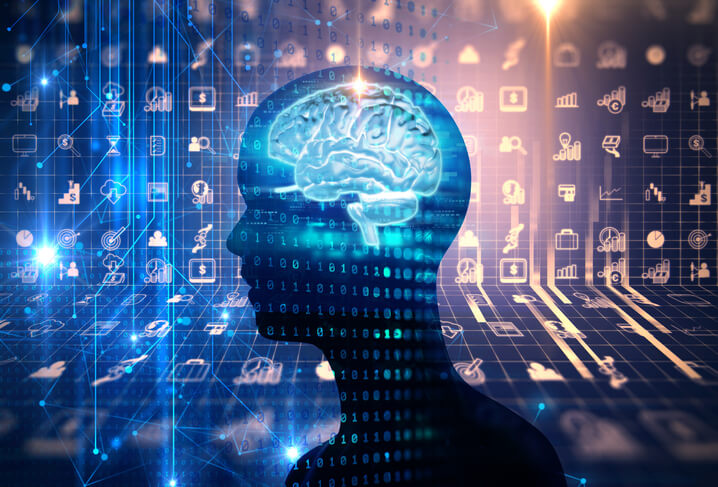Artificial Intelligence for the beginners
“Artificial Intelligence is the upcoming tool for drug discovery and medical imaging and diagnostics” –Artificial Intelligence: Healthcare’s New Nervous System, Accenture Consulting
“Cognitive robotics can integrate information from pre-op medical records with real-time operating metrics to physically guide and enhance the physician’s instrument precision. The technology incorporates data from actual surgical experiences to inform new, improved techniques and insights.”
-Accenture
“The future of the surgery is going to be far less invasive. Robotic medical applications are emerging around the world in the form of machine-assisted rehabilitation. Just think about where we were with medicine 25 years ago—who knows what the tools will be like in 20 years’ time.”
– Forbes
“When we see the intelligent systems talking to us, it’s AI at work. Siri, Facebook, and Google are excellent examples. You can also look at Amazon and Netflix recommendations! AI is all around us!”
-Kristian Hammond, Practical AI for dummies
Artificial intelligence (AI) is creating waves all around the corner. Be it automatons with killer energy or medical robots or Siri to guide to your nearest restaurant-AI has already integrated into our society surrounded by lots of hype, excitement and interestingly, fear. It would be frightening if we were not even aware of what it can do and what it cannot. This article serves to introduce this massive emerging suite of intelligent systems for a better understanding of AI and machine learning, and for a smooth sail throughout technical dealings with vendors and technology providers.
What is Artificial Intelligence?
Artificial intelligence is the subfield of computer science aimed to develop machines capable of performances usually done by humans (in other words, where the logical decision is taken). Few examples are IBM Watson, Face Recognition and Deep Learning. AI has already established its place in nearly all circles of life, including the medical sector, industries, manual labour, space, military, etc.
| Recommended for you | |
| Nanobots delivering drugs to cancerous tissues | |
| Ethics for AI in medicine | |
| Deep learning in health care |
Why AI research went on a steep hike past half century?
There are five reasons:-
- The rise of problem-oriented AIs
- Increased computational speed and better algorithms
- The explosive growth of data
- Integration of knowledge engineering into deep learning
- Adoption of alternative reasoning models
There is two school of thought for AI-strong AI and weak AI
- Strong AI:
It aims at stimulating certain thought processes of a human. - Weak AI:
It builds the system that behaves like people, with no link whatsoever to the human brain.
We also have narrow AI (for specific purposes) and broad AI (have reason in general) (based on the type of object)
Google’s deep learning and IBM Watson have integrated constant learning from the environment into their codes. For example, Amazon recommendation of a book based on your previous search and purchases is narrow AI into practice. Smart machines, cognitive computing, guidance systems, predictive analytics, machine learning, self‐driving cars, deep learning, natural language generation platforms are different aspects of general AI.
The question is: what makes anyone “intelligent”?
Intelligence or cognition can be broken down into three parts:
- Sensing (image processing, speech recognition, accelerometers, sonars, balanced detection, etc. );
- Reasoning (language processing, planning/problem solving, learning, situation assessment, evidence‐based inference, logic‐based inference, and natural language generation);
- Acting (mainly leads to functioning robots who do work like speech generation and robotic control).
For example, Apple’s Siri, Microsoft’s Cortana, and Google’s Now use all the above.
Driving Intelligence with big data
AI uses three main elements of human reasoning: assessing, inferring, and predicting. In today’s world where large data is generated every day, AI integrated the system to capture data, synthesize it, and use it to drive reasoning is most important. This is essential for digital health, as patient data is analyzed and useful information extracted for proper diagnosis. IBM Watson, Cancer IQ, Kyruus, Lumeris, Syapse, Flatiron Healthcare some prominent examples in this case. They work by quickly looking into evidence or match in millions of documents using several rules with the search accomplished in minimal time.
- Knowledge is inferred with the help of AI (for example, Cancer IQ integrates real-time medical data to identify patient risks, interpret complex data, and highlight the best evidence-based interventions);
- Next, the similarity is checked (IBM Watson assesses similarities in profiles), and further categorized;
- Evidence/proof is gathered and consolidated (in the case of disparity between two sets of data).
Regression analysis and Data mining along with assessing, inferring, and predicting are core points of many intelligent systems.
Communicating with AI
The use of language (a mode of communication) is notably one of the real indications of intelligence. So how do machines interact with us? Turing test is used to test intelligence in machines. The communication is based on three types of information:
- Pragmatics
- Semantics
- Syntax
Establishing syntax rules is comfortable with algorithms. However, pragmatics and semantics are difficult to deal. What is stated and what’s meant are entirely different things altogether. An algorithm makes no assumption; it only performs what’s it instructed to do. This is done with the help of extraction, tagging, and sentiment analysis.
Embracing emerging technologies
Why should we adopt AI? Those viewing AI with scepticism should put their doubts to rest for three reasons. With its predictive analysis (it can be used to predict the weather, onset of disease, etc. ), extraction of valuable data efficiently without the input of manual labour, and deep learning, AI has integrated itself into society in more than one way. Using neural networks and deep learning, IBM Watson makes it possible to assess the new information given and categorize accurately correctly. This is essential in future of digital health, which is a cesspool of big data.
Look into the future
To familiarize with AI better in future, one needs to keep the following points in mind.
- Know your landscape, and do your homework about the current market scenario.
- Remember your “focus.” The algorithms should be “focus” based.
- Collect your data correctly.
- Know how your systems work, at least at the level of the core intuition behind a system.
- Be mindful that you are entering into a human-computer partnership.
Image credit: www.istockphoto.com

















